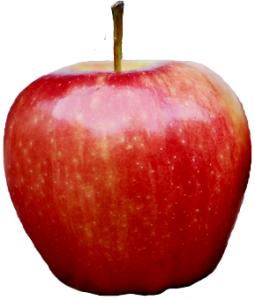GM Foods and Possible Health Risks
(Sept 2014)
GMO Foods and health. What’s the big deal?
Genetically Modified Organisms are the result of a laboratory process where genes from the DNA of one species are extracted and then artificially forced into the genes of an unrelated plant or animal. This process is entirely different from the cross breeding of plants that farmers have been doing for years to create novel varieties of crops. Cross breeding still uses nature as the ultimate deciding factor in the sequencing of the plant genes, and what cross bred crops thrive and what cross bred crops fail. Genetic modification is NOT a natural process. To create a GM plant scientists in a lab first isolate the desired gene. This gene does not need to even come from a plant. In fact it can come from ANY SPECIES: a plant, a virus or bacteria, an animal, even a human. They then use cell invasion technology where they use bacteria and viruses as well as other methods to invade the plant cells with the intended gene. Normally cell walls would be resistant to foreign DNA, so the scientists have to weaken the cell wall to get the intended gene inside so that it can interact with the plants own DNA. Once this forced genetic interaction occurs, scientists select only the desired DNA sequencing and then go on to create their genetically modified food’.
GM foods can be made to withstand cold, pesticides, herbicides, and other things that normal crops would be devastated by. The ultimate goal with GM foods is profit through higher yields, but strangely studies have shown that they are actually producing lower yields. Genetic engineers also continue to encounter unintended side-effects like plants creating toxins, reacting to weather differently, containing too much or too little nutrients, becoming diseased or malfunctioning and dying. This food is unnaturally modified food, and there are still questions surrounding GMO safety with regards to the effects of these foods on our bodies. These effects are not thoroughly studied before GMO foods are released into the market – even though some animal studies have pointed towards GM foods potentially being unsafe for both animal and human consumption.
The American Academy of Environmental Medicine warned against GM food use. They reported “Several animal studies indicate serious health risks associated with GM foods” including infertility, immune problems, accelerated aging, faulty insulin regulation, and changes in major organs and the gastrointestinal system. Other studies since have shown the following: liver and kidney toxicity in mammals fed on a GM diet for only 90 days, the stomach lining of rats fed GM potatoes showed excessive cell growth – a condition that may lead to cancer, GM peas generated an allergic-type inflammatory response in mice, soy allergies in people living in the UK skyrocketed by 50% after the introduction of GM soy (which can contain as much as 7 times the amount of a known soy allergen). A 2011 study on mice reported that the micro RNA from the GM food managed to make it through digestion into the bloodstream and attach to organs and alter organ function (yikes!). This study also stated that GM foods through this micro RNA can regulate the expression of target genes in mammals. These are all fairly short-term studies, with the long-term side effects unknown. Yet companies who create these GM foods still insist that the testing of GM foods for human consumption and safety isn’t necessary.
GM foods area already here in Canada, and have been since 1994. I believe that some of the effects of GM foods can already be seen in our digestive maladies, with food allergies/sensitivities, inflammatory bowel diseases, and bowel issues on the rise. GM foods grown in Canada are corn (in all corn products and also found in eggs, milk and meat from animals fed GM corn), canola, soy (in all soy products and also found in eggs, milk and meat from animals fed GM soy), and sugar beet (sugar – found in most processed foods). GM foods imported into Canada are cottonseed oil (vegetable oil and also in processed foods such as potato chips), papaya, squash (zucchini , crookneck squash and straight-neck squash), and milk products (milk solids and powder, frozen dairy desserts, imported mixed drinks with milk ingredients). And as far as imported processed foods the Canadian Government is proposing to allow LLP (low level presence 0.1% and higher) foods in WITHOUT actual Canadian safety testing. Processed imported foods can contain up to staggering 70% GM foods.
So, what can we do to lower our intake of GM foods? The answer is to buy mostly organic, whole foods – OR support your local farmers who use non-GMO seed and traditional cross breeding methods to grow their crops! Locally produced organic foods are the most nutritious, unadulterated, and healthful foods you can buy to ensure optimal health in today’s bombardment of questionable options. Also look for the ‘Non-GMO Project’ label on your conventionally grown and organic foods to help you determine whether or not foods are a safe and healthy choice. Living a healthy life is our birthright; invest in yourself and our future by making your vote count and purchasing healthful foods!
